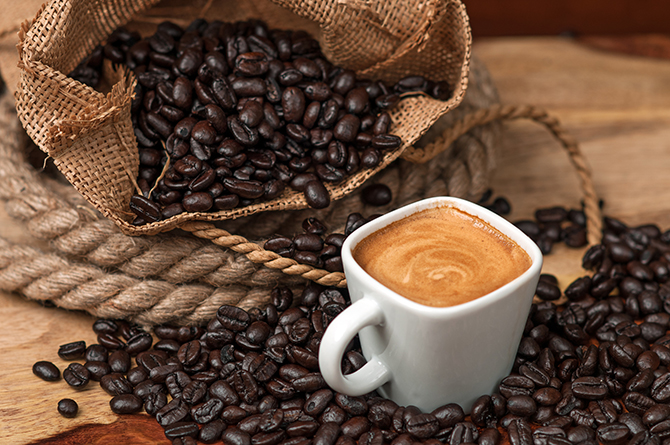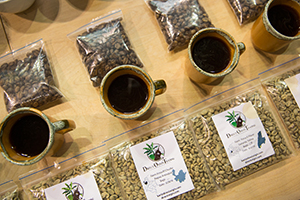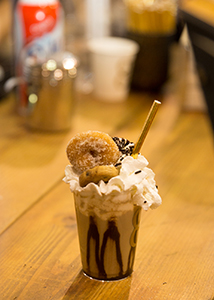COFFEE BREAK

By Clint Brownfield
Acouple of weeks ago I headed to the cavernous 69th Regiment Armory on Lexington Avenue at 26th St. to sip my way through the 2nd Annual New York Coffee Festival. Nearly 100 vendors were there to exhibit their wares: coffee (of course), tea, soy/almond/macadamia milk, chocolate, as well as espresso machines the size of SUVs.
One of my missions was to learn how best to store coffee, which can be a bewildering quest. I usually buy coffee—one pound at a time—freshly ground from roasted beans at Zabar’s on the UWS. Once home, I open the bag to discover the aroma is one of life’s nicest small pleasures.

THE PERFECT CUP OF JOE
As I made the rounds at the Coffee Festival, I asked some of the vendors how I should best store the freshly ground coffee. Apparently, you really shouldn’t grind a pound of beans all at once. Rather, grind just what you need for the time. That’s about the last thing I want to do after I stagger into my kitchen every morning. I’ve thought about buying one of those coffee makers that has a built-in grinder, but figured I’d be too stupid to follow the instructions. I can’t even set the clock on the one I have!
My next question was how to best store coffee beans. Store the beans in an airtight, non-clear container. Air and light can cause the beans to degenerate into a lackluster product sooner than you might think. The caffeine content could even be affected! There’s much debate on whether you should keep beans in the refrigerator and the consensus from most is “No!” However, if you do store coffee this way, be sure that the actual temperature of the refrigerator compared to the room doesn’t fluctuate too much. This is not ideal. Also, unless the container is totally airtight, the humidity in a fridge is harmful to a nicely roasted bean.
A good rule of thumb is if you buy several pounds of beans at one time, it is advised that you keep them in the freezer in an airtight container. Before you buy, make sure there’s a round airtight seal on the bag. When they’re ready for use, bring the beans to room temperature before you grind them. Make sure the bag is resealed after the initial opening.

KNOW WHEN & WHERE
The romance of seeing open barrels of beans in charming stores is also a false thrill. These beans are already exposed to the air and deterioration has begun, especially if the store doesn’t have a rapid rate of turnover in the coffee department. The lesson here: Know your vendor. Ask where the beans come from, how long have they been in the store, when were they roasted, etc.
Using a Mason jar, a recycled sauce jar or even a plastic water bottle is fine, but remember light is harmful to the beans. So, if you decide to go this route, don’t place the container on a sunny windowsill. Storing the container inside a kitchen cabinet is better. The bottom line to making the perfect cup of java is keep fresh beans at room temperature in something airtight and out of direct sunlight. Grind them fresh every time you brew and enjoy.
This all reminded me of when, a couple of years ago, I was doing research for a health/wellness travel piece. I checked into Canyon Ranch in Lenox, MA, and got the chance to interview Dr. Mark Liponis, the famed spa’s chief medical officer. I asked him what he thought about coffee consumption and he said their research shows that we’re better off with drinking two cups of coffee every day than drinking none at all. That did it for me. Coffee as a health food! Of course, run this by your doctor before you dive in.
Plans are already afoot for next year’s three-day festival (newyorkcoffeefestival.com). The price of admission will allow you to come and go as you please for the duration of the show. The vendors are very generous with samples—small cups of coffee from all over the world, various creamers and even bags of beans. The samples alone will practically pay for the cost of your tickets. Enjoy!






